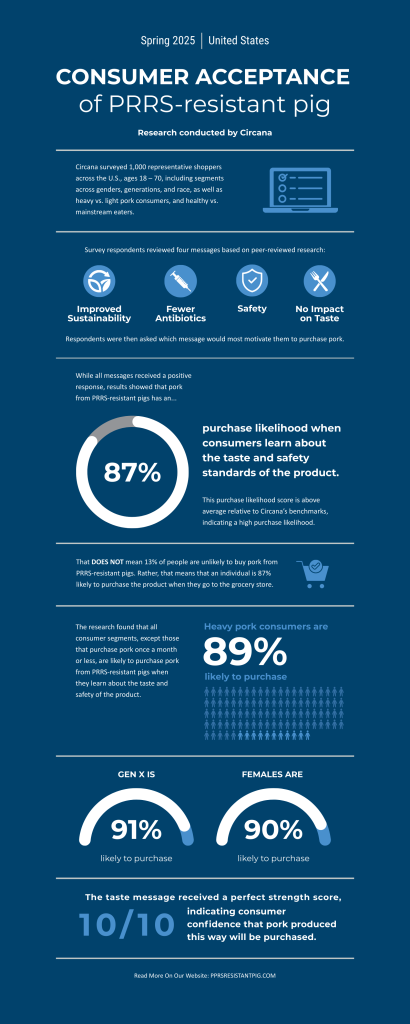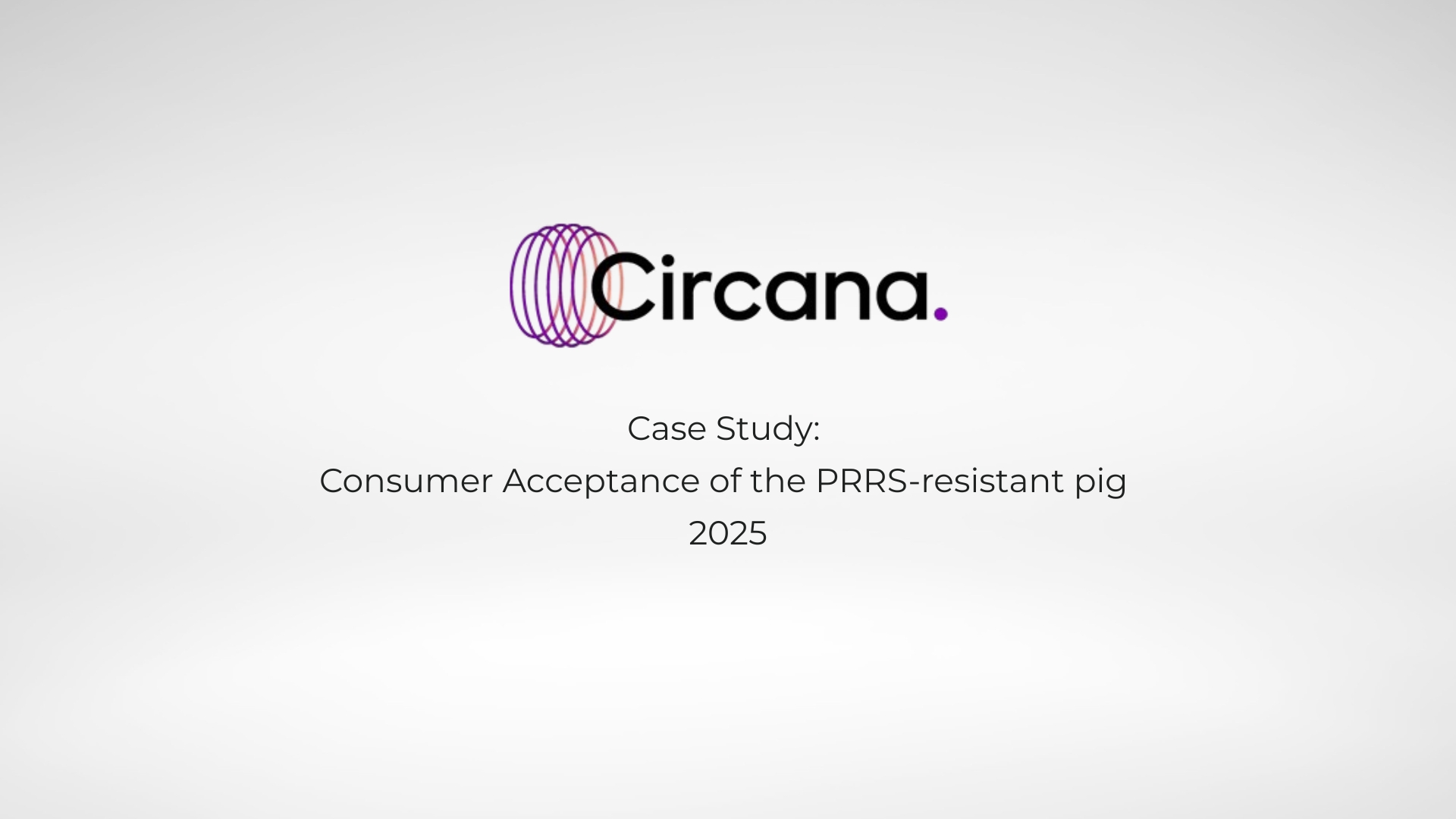
The FDA has recently approved technology used to breed PRRS-resistant pigs. Pig Improvement Company (PIC) is among the first to receive approval for the use of gene editing in commercial livestock in the U.S. Before PIC begins selling these pigs, the company evaluated which of four different messages would resonate best with consumers in terms of motivating pork purchase and believability.
A recent study conducted by Circana for the Pig Improvement Company (PIC) evaluated these four messages to determine the optimal one to convey this new pork production method to consumers. The study also provided insight to whether consumers are likely to purchase pork products produced this way.
The study surveyed 1,000 representative shoppers across the U.S., ages 18 to 70. The study covered many different consumer segments and had representative segments of each gender, generation and race, as well as heavy vs. light pork consumers and healthy vs. mainstream consumers. Every respondent was the primary or shared shopper for their household, and all had to be current purchasers of pork, or open to buying pork products. Four messages, based on the findings of peer-reviewed research on the benefits of removing PRRS, were shared with the respondents about pork products from PRRS-resistant pigs: Fewer Antibiotics, Improved Sustainability, Safety, and No Impact to Taste.
Using a prediction markets* testing approach, each participant predicted responses about the general population’s interest in pork from PRRS-resistant pigs and were given an equal amount of virtual currency (tokens) to allocate across responses. Respondents were asked to predict whether different messages about pork from PRRS-resistant pigs would motivate consumers to purchase pork.
Taste Above All
While all messages are important and received a positive response, results showed that pork from PRRS-resistant pigs has the highest likelihood of being purchased when consumers read messages which revolve around first, the taste of pork products, followed by safety. Pork from PRRS-resistant pigs has a high likelihood of being purchased when consumers feel confident that the products will taste the same and are safe to consume.
The message around Taste received a Purchase Likelihood score of 87%, falling above average relative to Circana’s edible grocery benchmarks, indicating a high likelihood to be purchased. This taste message also received a perfect strength score of 10 out of 10, indicating consumer confidence that pork produced this way will be purchased.
Females, an important purchasing group, are especially likely to purchase pork from PRRS-resistant pigs when they understand that pork produced this way will taste the same. Heavy pork consumers are also highly likely to purchase with this message.
The Safety message also received an above average Purchase Likelihood score of 83%.
This research will be replicated in the U.S., Japan, Canada and Mexico in Fall 2025 and on an ongoing basis.
Note: Prediction markets* research is an alternative to traditional survey methods. It challenges participants to bet virtual currency on how a targeted audience will react to ideas, vs. limiting responses solely to their personal preferences. It is a “crowdsourcing” approach that provides a much greater diversity of thinking. By framing the questions in a broader context (e.g., measuring how “they” will behave vs. how “you” as an individual would behave), it takes the bias out of the equaton and allows respondents to be more objective in their responses. This approach has a proven 90% success rate in predicting in-market behavior.
